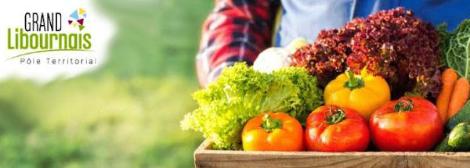The example of the Grand Libournais food system and its relationship with its third places
2024
The Grand Libournais (33) is a mixed territory (urban, peri-urban and rural) made up of 136 municipalities. A Local Food Project has been developed there since 2020 (certified PAT and recognised as a PNA winner in 2023, discover the project sheet on the Essaimeur website). Its development was made possible thanks to the commitment of many local stakeholders, such as third place providers.
To download : plaquettetierslieuxhd_1_.pdf (21 MiB), diagnostic_agricole_et_alimentaire_1_.pdf (7.6 MiB)

Five third places or equivalent ‘resource centres’ have been identified in the area:
L’Usine Végétale, which brings together several associations working for ecological transitions (food, awareness of agroecological practices, eco-construction). This third place is identified as an ESS resource centre. This structure is the head of a network of a consortium that offers an incubation programme for ESS project leaders in the Libournais Urban Community (CALI).
La Possiblerie, a third place dedicated to agroecology that brings together agroforestry viticulture, market gardening, nursery growers and a nature awareness association. This place also offers a weekly farmers’ market and participatory workshops.
Coeur de Bastide, a third place in the Pays Foyen region, brings together socially committed actors. This is the case of Les Râteleurs en Pays Foyen, which is working to promote good food for all. Among other things, it is running an experiment in food security. The Société Coopérative d’Intérêt Collectif Au ras du Sol develops composting solutions (training, equipment).
Although not quite a third place, Castilab, an employment-focused company, brings together other actors committed to ecological and economic transition projects in the Castillonnais region: access to healthy food for all, visibility for local organic producers, circularity of bio-waste, etc. The upcoming opening of a farmers’ shop in collaboration with Castillonais en Transition and Syclique will enable further actions to be developed.
Biotope Festival, which is not strictly speaking a third place but a resource centre for transitions in the Greater St Emilion area (visibility for local producers, taste awareness workshops, biodiversity awareness, etc.).
Valérie Gandré, PAT coordinator, describes the strong link between the PAT’s work and its stakeholders:
-
Active participation by third place stakeholders, which helps to understand the needs of the area: Indeed, as part of regional workshops, they helped to write the PAT roadmap. Third places bring together a diverse range of people (professionals, residents, etc.), which facilitates the dissemination of information and feedback from the field that is necessary for the PAT to evolve. They are agents of change and drivers of the momentum needed for the region.
-
Promoting cooperation, one of the roles supported by the PAT: Consistency between the joint actions of these third places is essential in order to ensure complementarity and avoid competition between them. This involves, for example, organising joint events or responding to calls for projects.
-
Cooperation, a model that is not always easy to achieve: PATs aim to create spaces for dialogue and co-construction. However, ‘silo’ mentalities can persist and hinder the successful development of actions. This is the challenge facing these regional projects.